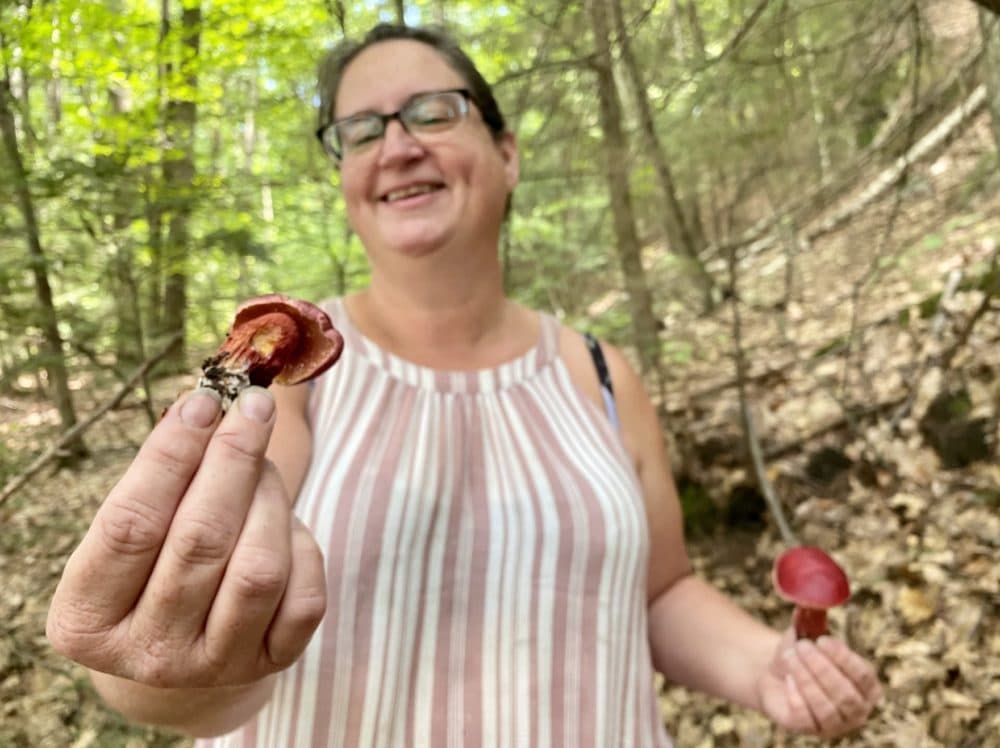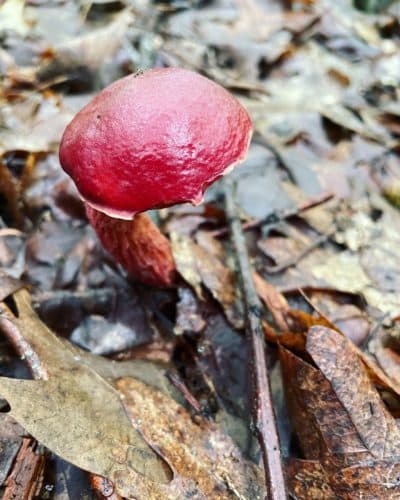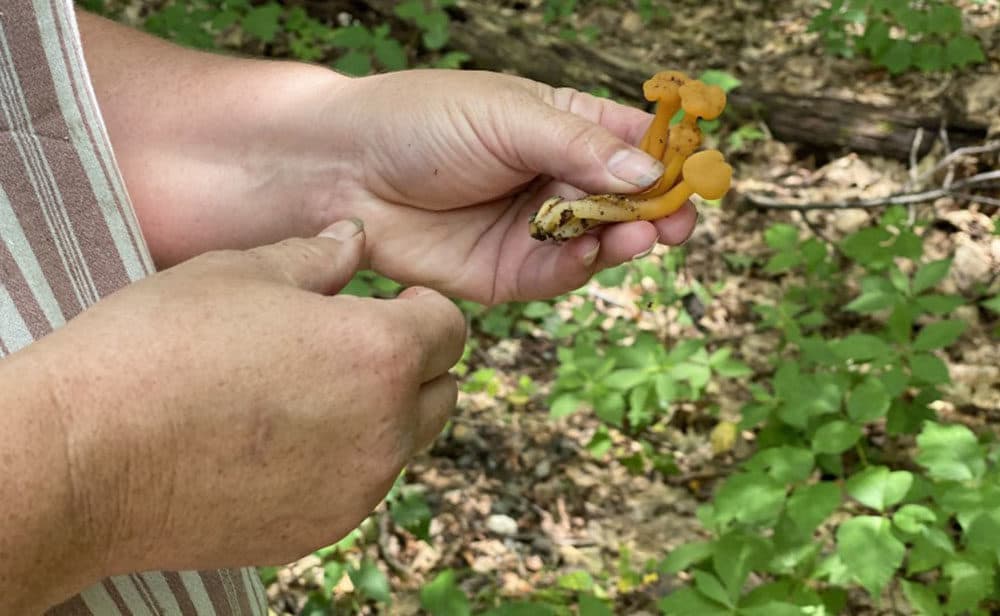Advertisement
Summer Rains Bring Mushroom Frenzy To New England

If you were hoping for hot, sunny days on the beach this summer, you’ve been mostly disappointed. But the wet, cool weather has been great for wild mushroom gatherers like Christine Gagnon. She’s known on Facebook for her pictures, including selfies with wild mushrooms, jokingly called “melfies.”
On a recent walk along the Piscataqua River near her house in Goffstown she stopped every few yards.
“Everywhere you go, you can’t not see mushrooms!” she exclaimed, pointing to a few peaking through the oak leaves.
You might have noticed this too. Fungi of all colors and kinds have popped up in yards and in the woods. It’s because of the damp conditions, a big shift from the drought conditions of last summer and earlier this year, and a part of the increased precipitation expected with climate change.
Gagnon says some edible mushrooms she’s never seen before are now out in full force. The candy apple bolete was on Gagnon’s bucket list to find this year. It’s known for its ruby cap, golden dew on its pores and citrusy taste. Gagnon has spotted it multiple times already this season.

These rare mushrooms aren’t new to New Hampshire; the mycelium has been here underground all along, just waiting for the temperatures and rain we had this July.
“When the mycelial mass recognizes that conditions are right, it branches out and fuses, inflates with water, and continues to fuse and form until it creates whatever ‘mushroom’ fruiting body it was programmed to,” Gagnon explains.
And using wild mushrooms isn’t anything new either; Indigenous people have gathered certain species here for centuries, and many immigrant communities have continued foraging traditions from their home country.
In the past few years, Gagnon has become a go-to in foraging circles. She got a certification to sell wild mushrooms commercially in Rhode Island. This summer she’s leading mushroom walks for beginners in the region. Gagnon says Facebook is a great place to find other mushroom enthusiasts — and the community is growing. The rise of outdoor hobbies during the pandemic, plus the abundance of mushrooms this year, has a lot of people excited about foraging.
But there’s a downside. Recently, online groups have been overwhelmed with posts from people who don’t seem to know much about what they’re harvesting.
“It is a little bit scary because you have people posting literally a pile of mushrooms on the table. ‘Are these edible?’ And that’s what they’re asking. Well, don’t you think you should know what they are first?” she says.

The Facebook group in Maine, which has over 12,000 members, recently made a new rule: if someone asks if a foraged mushroom is edible or takes a wild guess, the post will be removed, and they will be blocked from the group.
The Northern New England Poison Control Center says the burst of interest in foraging — and the availability of mushrooms — have led to a big uptick in calls about mushroom poisonings. Over 20 from New Hampshire came in this July. That’s close to half the number of mushroom calls the poison center gets in a typical year.
Some were children who had eaten a wild mushroom in their backyard; others were foragers who had misidentified mushrooms. People reported vomiting, diarrhea, hospitalization, but so far no deaths.
Poison Control has been reaching out to the mushroom community urging caution.
Gagnon says if you’re interested in mushrooms, be patient and learn.
“Everybody is looking for one rule that’s going to cover all mushrooms — if it looks like this then it must be okay,” she says. “And it’s like: no.”
More from WBUR
The world of mushrooms is complex; there are thousands of species in New Hampshire alone.
Consider the Amanita family. Some look a bit like a cartoon mushroom — colored caps dotted with warty white spots. Certain species are poisonous. Others, like the one Gagnon finds alongside the trail, are edible. The one she pulls up is called a “blusher” because it stains pink when touched.
Gagnon pops this one into her basket and continues along the path. By the end of her walk, she’s collected five different kinds: some to dehydrate and use as a natural dye in an art project, some to study and identify with the help of friends, and others to sauté for dinner.
If you, your child, or your pet has ingested a potentially poisonous mushroom, you can call the Northern New England Poison Control Center 24/7 at 1-800-222-1222.
This story is a production of the New England News Collaborative. It was originally published by New Hampshire Public Radio on Aug. 5, 2021.